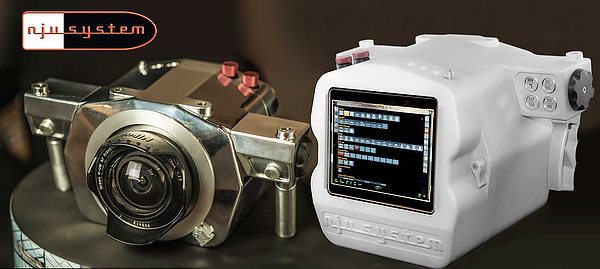Andrej Belic: Photokina 2014
I first met Adam Hanlon exactly two years ago at Photokina 2012 and I called him a few days ago, but he told me that he couldn’t attend this year. So here’s my report from Photokina 2014:
Blackmagic Design
The Australian company with the unusual name was presenting their new flagship named URSA, a large and heavy, but very innovative movie camera: 4k at 60 fps with an APS sized sensor, various integrated monitors and a lot of other features like 12 Gbit SDI (world’s first), all that comes at a bargain price of 6.000 €.
Also at show were their other models like 4k production cam, smaller and for some 2.500 €, much more affordable and handy.
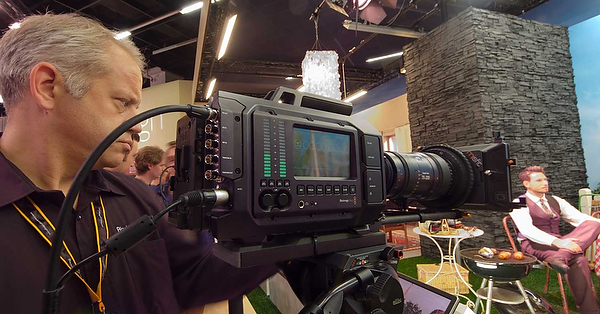
Metz
German strobe manufacturer Metz had on display their new model with an innovative new touch screen. Metz is renowned for offering strobes for all major brands (Nikon, Canon, Sony, MFT and Pentax). On their higher end line they have a strobe which can do all these four TTL protocols via adapters. Makes me thinking about designing an underwater strobe that can provides similiar functions.
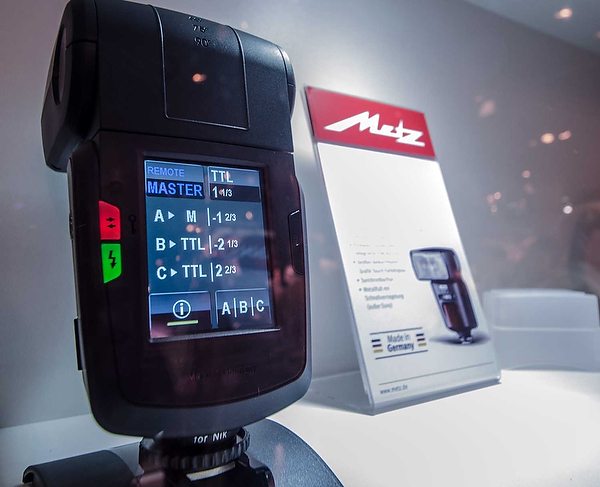
Schneider Kreuznach
Renowned German manufacturer of medium format lenses introduced new lenses for Nikon and Canon. Apart from Tilt/Shift they also showed a new 35mm, 50mm and Macro 85 mm, all manual focus. Priced in the region of 3.000 €, looking great and reminding of Zeiss Otus line.

RED
Surprisingly RED was also presented, with some huge and bulky setups comparable to Blackmagic’s Ursa, but also compact ones, looking great with a new 9” touch screen and some interesting features for the demanding videographer. New Dragon sensor has 16 bit color depth and is one generation ahead in sensor technology compared to other pro cameras.
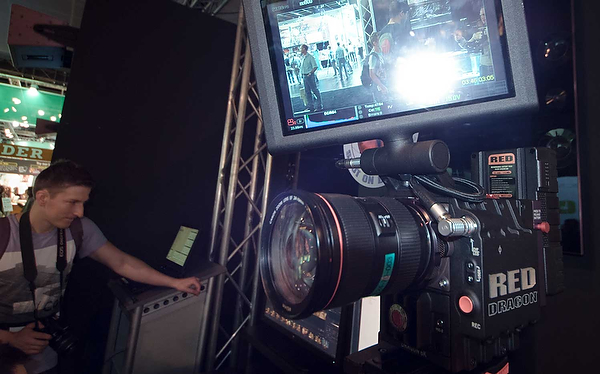
Sigma
Sigma had a large booth with a vast array of lenses in all major mounts. Sigma has earned a reputation in designing top quality lenses at low prices and so their booth was very crowded and it was hard to get some hands on objects of desire.
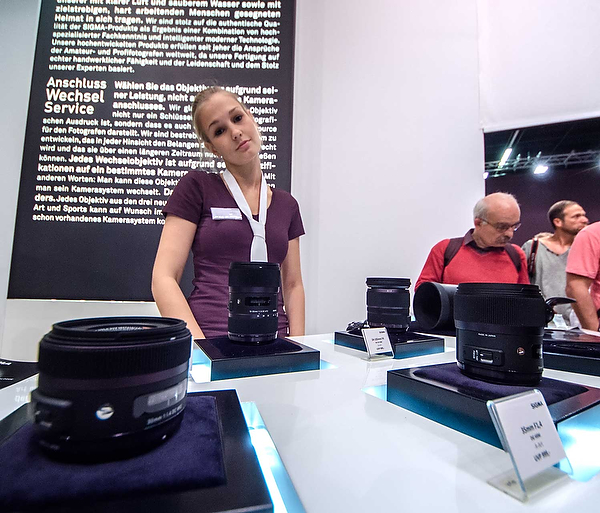
Sony
Sony was present with one of the largest booths showcasing all their new cameras including their new 4k video camera. They had their full range of lenses in both a and e-mount as well with SLR, and compact cameras including the innovative a7 series. It was very crowded, hard to get hands on.
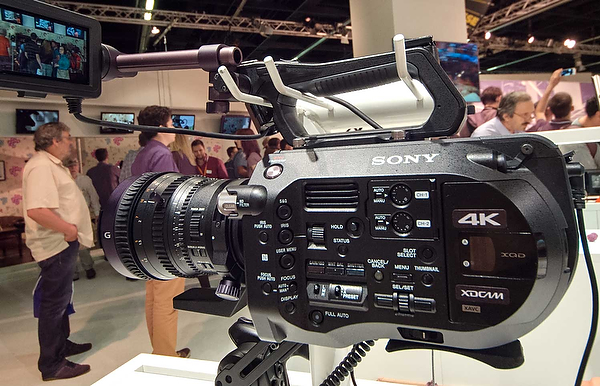
Panasonic
I made a picture of their high priced Varicam, but couldn’t get my hands on the GH4 and the new LX100 with fixed lens with 4k recording. Also new a revamped version of the GM1, called GM5 adding viewfinder.
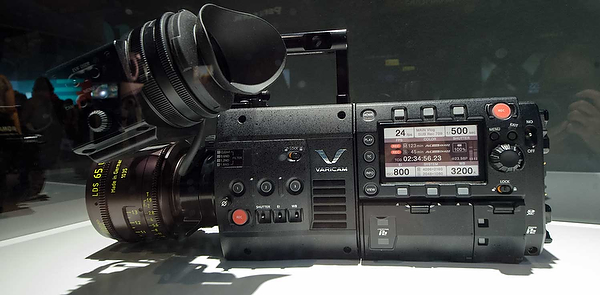
Olympus
One of the most interesting cameras was Olympus revamped M1 model. It received a new firmware upgrade (and a future 4k firmware upgrade has been rumored) enabling a fully featured free remote software called capture which is the best remote I’ve encountered from any manufacturer. LiveView control is even available in 1280x960 resolution at 24p (compared to 640x480 on Nikon and a stuttering 15-20 fps on Canon). A silver/black Panda version will come soon and some new lenses like 40-180/2.8 and an upcoming 7-14/2.8 equaling 14-28 on Full Frame. A comparison with an SLR was presented and a similar MFT setup weighs only half. A new smaller model was also on display with a retractable monitor for selfies (underwater?).
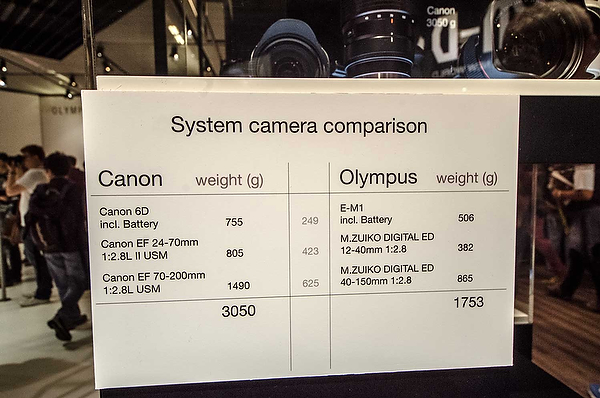
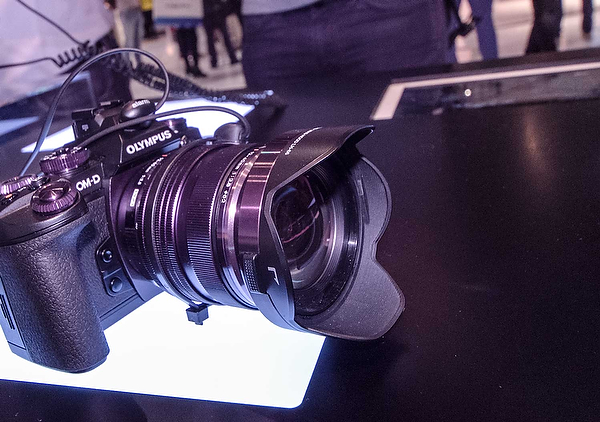
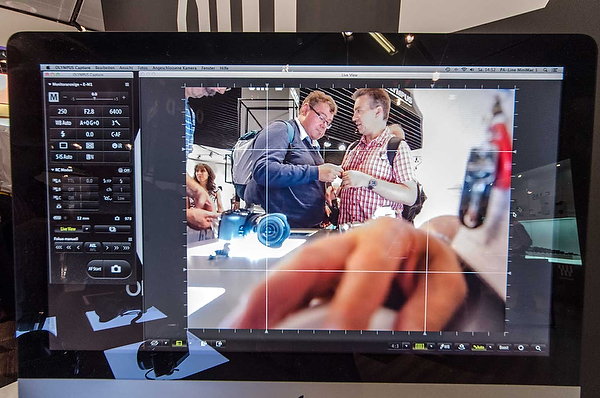
Samsung
A new model with mind blowing specs called NX1: 28 MP APS sensor and 4k video in a very small housing comparable to Olympus’ earlier Four Thirds SLR models. Comes with tiltable monitor, very nice.
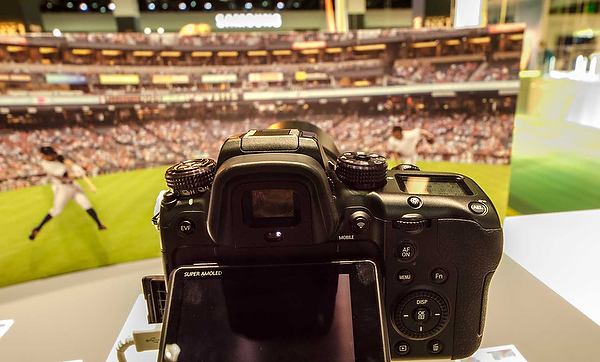
Zeiss
Zeiss had an interesting array of new/old/revamped lenses for all kind of mounts. I made a size comparison of their mirrorless wide angle 15mm lens and its’ DSLR counterpart (mirrorless wins) and had a glimpse at their new prestigious OTUS line consisting of 55mm and a new 85mm which achieve new optical standards at open aperture.

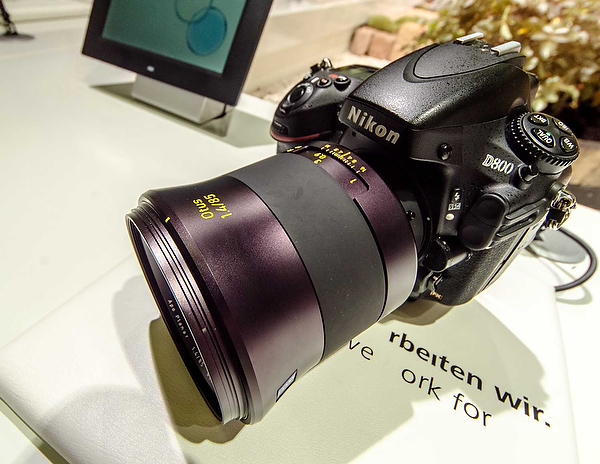

Canon
Of much interest was Canon’s long awaited 7D Mark II. It offers 10 fps at 20 MP and a new quicker AF sensor, making it an APS sized brother to the EOS 1D X, of even more interest was Dual Pixel AF which sets new standards in Liveview focusing, unfortunately it lacks Wifi and tiltable monitor.
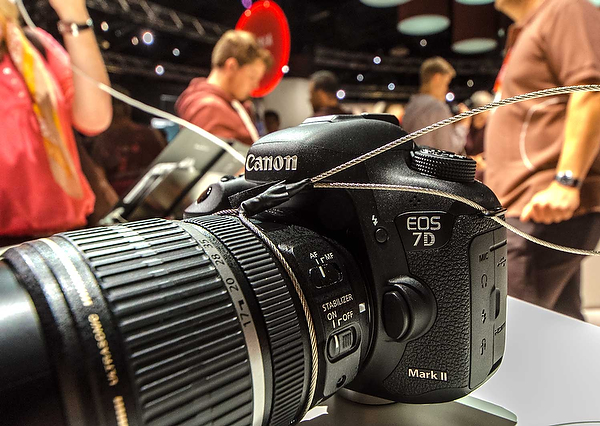
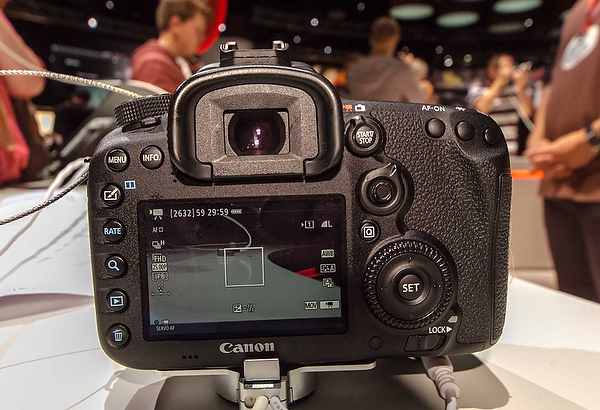
Nikon
The new Nikon D750 was displayed and it shoots some 6,5 fps in 24 MP Full Frame or 10 fps in 10 MP DX mode, new and quick AF sensors that derive from the D810, but still a slow contrast AF in LiveView. However, it offers Wifi and a tiltable monitor both, firsts for a full frame model.
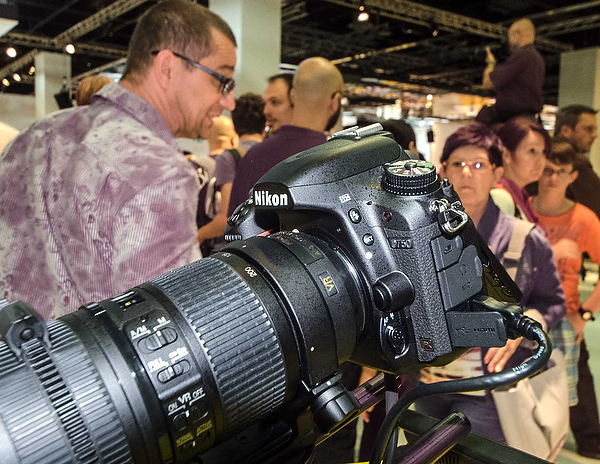
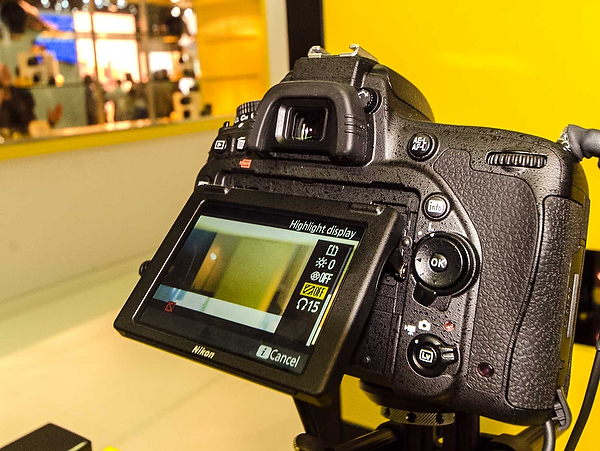
Leica
Leica are always present at Photokina with the largest booth they showed their new T model , a compact mirrorless model with APS sensor and a promising lens line like the 11-23mm (16-35mm on Full Frame). It also has Wifi for remote control.
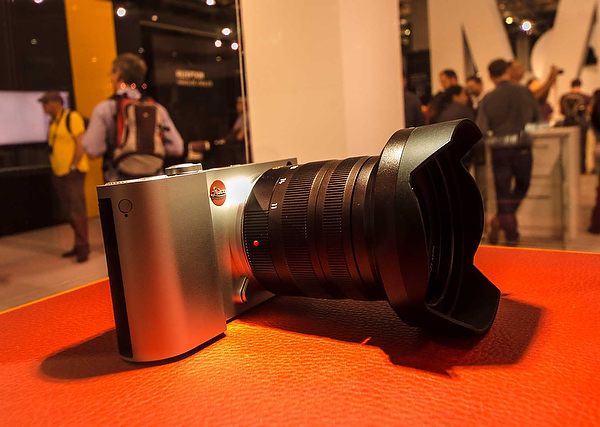
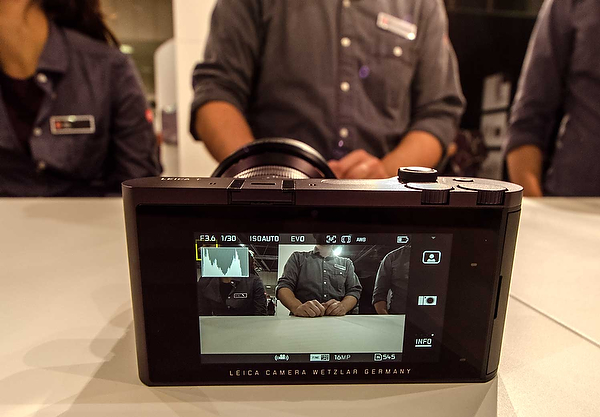
Ricoh
Ricoh had a new small go-pro like video camera with included monitor and fisheye lens, very nice and innovative.

Fuji
Fuji had three new camera models with Wifi, makes me think about including Fuji in our remote software/underwater housings
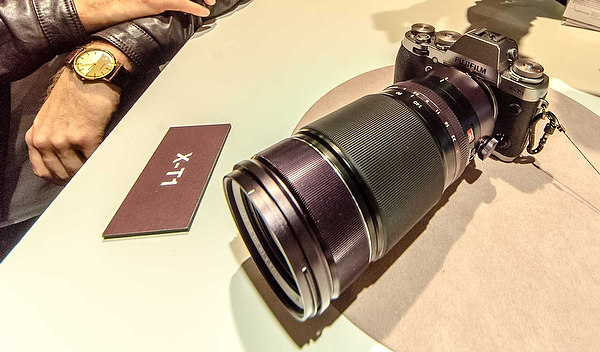
Verdict
Many new trends were presented at the Photokina this year. Lenses keep getting better and there is more top quality glass than ever before. Zeiss, Sigma and Schneider Kreuznach have all greatly expanded their line up and Canon, Nikon and Sony also offer high grade pro lenses. Professional MFT lens offers are also expanding.
Another undeniable trend is 4K. While Canon and Nikon still stick to HD, MFT companies and outsiders like Samsung rush in. Also small companies like Blackmagic and RED set new standards regarding high resolution video.
Last but not least, remote control seems an upcoming trend, with more models featuring Wifi and new software emerging to handle cameras without having to touch them directly.
Andrej Belic and his nju system
Two years ago we introduced Nikonos Conversion System to achieve higher optical quality in underwater photography. At first it was only presented for major housing manufacturers but we have constantly expanded our lineup and are offering adaptors for almost all housing brands. Expect some news soon.

Another innovation and the reason why I stressed Wifi and remote software in my report is that we have engineered a new generation of underwater housings. Our housings are electronically controlled via software making them universal and useful for ALL models from Nikon and Canon, and other manufacturers in the future.
They come in various sizes and price categories, more on that very soon.
